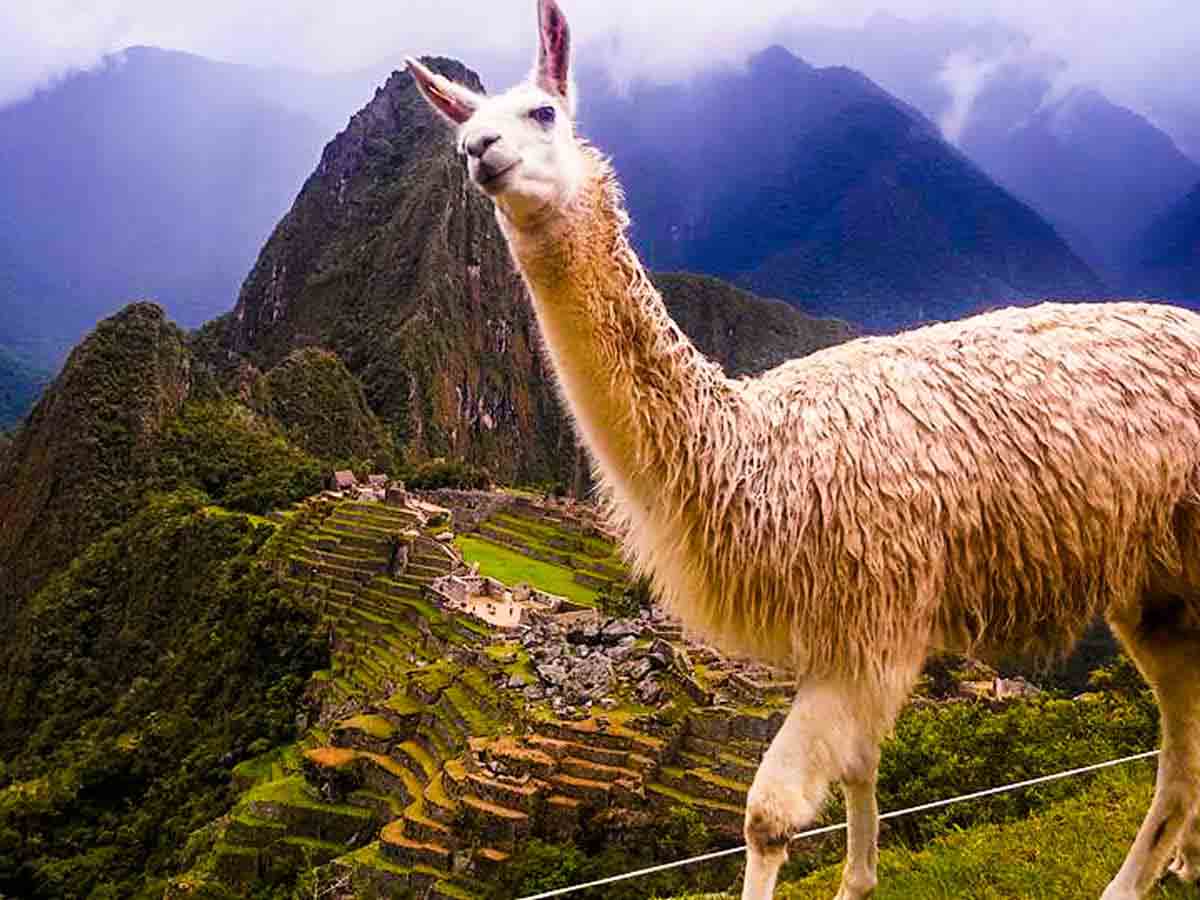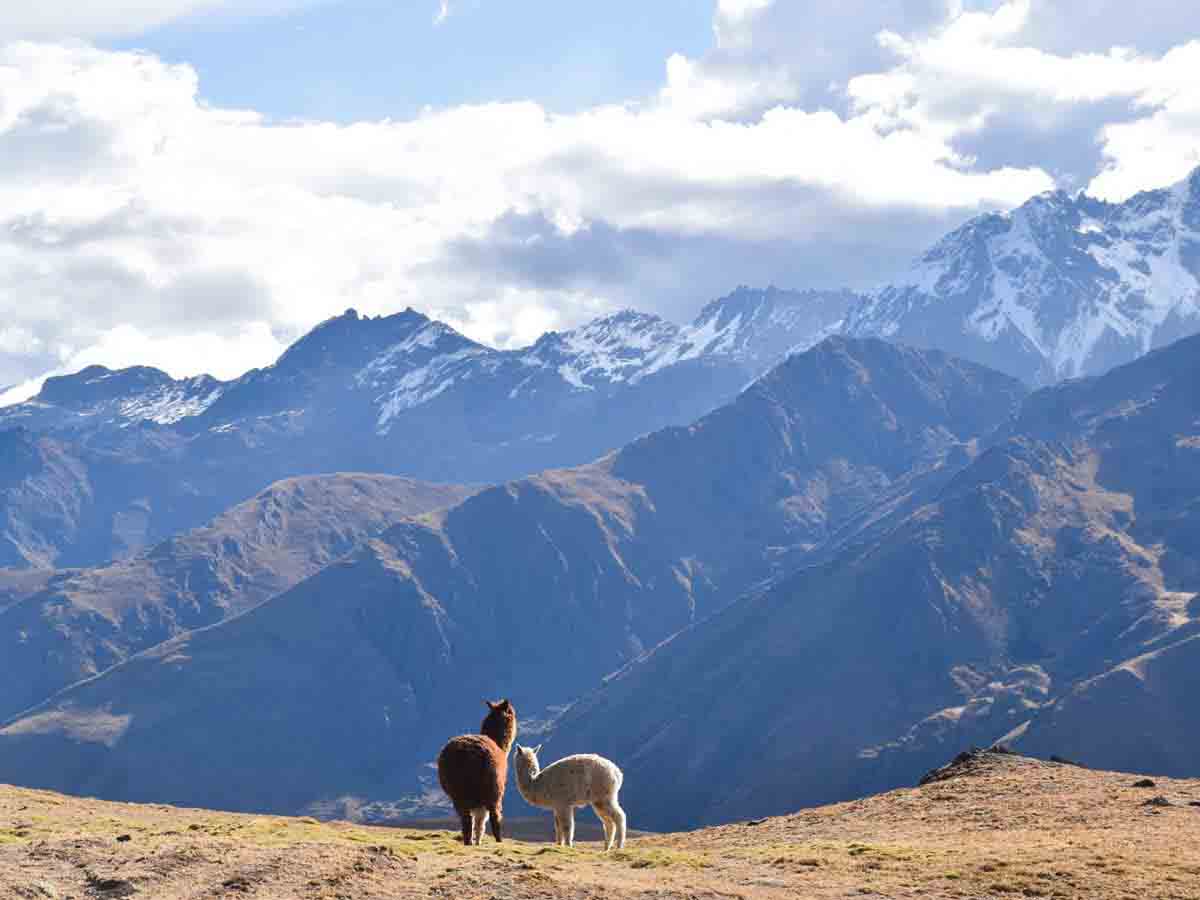
Llama and alpaca roam the highlands of Peru, but unfortunately not in the great herds of pre-inca times. However, there are always a few around, especially the domesticated llama and alpaca.
The Alpaca is the cute and cuddly one, especially while still a baby. It grows a luxury, long wool coat that comes in as many as 20 colors and its wool is used in knitting sweaters and weaving rugs and wall hangings. Its finest wool is from the first shearing and is called "baby alpaca". When full-grown it´s close to 1 1/2 meters (4.9 feet) tall and weighs about 7 kg (15 pounds). Its size and the shortness of its neck distinguish it from the llama. There are two types of alpaca. The common Huancayo with short thick legs and the suri, least predominant and bit taller and also nicknamed the Bob Marley for its shaggy curly dreadlocks that grow around its face and chest.
The Llama is the pack animal with a course coat in as many as 50 colors, though one that´s unsuitable for weavings or fine-wearing apparel. It can reach almost 2 meters (6 feet) from its hoofs to the top of its elongated neck and long, curved ears. It can carry 40-60 kg (88-132) pounds), depending on the length of the trip. It can also have some nasty habits, like spitting in your eye or kicking you if you get too close to its hind legs.
One of the most notable differences between llamas vs alpacas is their size: the llamas are visibly higher than the alpacas. The llamas measure around 120 centimeters to the cross, while the alpacas barely reach 90.
Therefore, they are also heavier: the llamas exceed 100 kilograms of weight, while the alpacas do not usually exceed 60.
If we look closely at his face, we find more differences between llama vs alpaca: the alpacas are rounder and have less sharp facial features than their cousins call them.
The llama have long, pointed ears: those of the alpacas are more rounded. The same happens with the nose: the alpaca protrudes more and has a longer aspect.

Regarding his relationship with the human being, the difference between these two animals is also noted. The wool of the alpaca is a very coveted fiber because it is soft and light, so not only do they have a mantle thicker and more abundant than the llamas, but they also look more spongy.
On the other hand, as llama wool is rougher and harder to work, they have been employed as draft animals. This also takes advantage of its greater physical power. The llamas, therefore, have less wool and a rougher and less friendly appearance than the alpacas.
Other differences between llama and alpaca are in their character. While both are herd animals, domesticated and showing curiosity for humans, the differences end here.
Alpacas are rather shy animals that will flee if strangers try to approach. They do not like to work for the human being and, if they ever feel angry or annoyed, they can resort to spitting; although if you have escape, you will prefer to get away.
On the contrary, the llamas are more extroverted, but also more stubborn. If a llama feels upset or is not being treated as she likes, it will not hesitate to spit or kick anyone who is nearby.
The differences between llama and alpaca seem to be formed from small details, although you only need to know how to realize them so that they become obvious. If you are in front of an animal of these and you do not know what it is, trust its size and its ears instead of trying to provoke it to spit at you.
An Alpaca... |
A Llama... |
|
|
|
|
|
|
|
|
|
|
|
|

Usually the Llama and Alpaca live in the high mountain, but in Cusco and Puno, there are point where you can see the Llama and Alpaca. For example in the Inca Trail, Machu Picchu.
